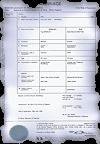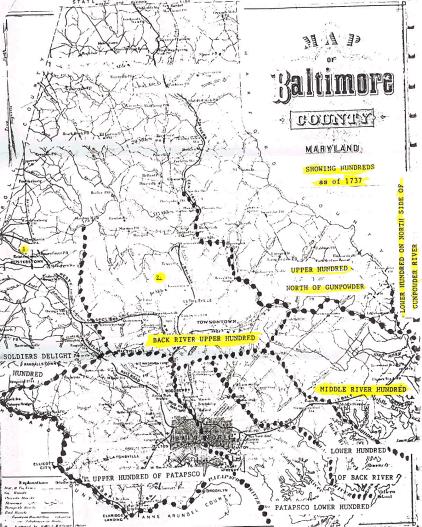



2
because they do not seem to give us the vital
genealogical facts we are after, i.e., names of
parents, dates, children, and so on.
But genealogists who dig into the land records
deeper will discover that land grants and deeds
can provide evidence of the places where an
ancestor lived and for how long, when he moved
into or moved out of a county, and in many
cases,
a
surprising
amount
of
detailed
information about a person.
Why Land Records?
Here are three good reasons why land records
are valuable for genealogical research:
1. The odds are good. Since 90%
of
the
adult
white
male
population owned land before
1850, land grants and deeds
provide an excellent way of
records. Deeds are recorded at
the
county
level
and
when
property
is
sold
a
deed
is
recorded at the local courthouse.
It is a protection to both the buyer and seller that
the land being transferred is properly recorded.
There are rare exceptions, such as a deed held
by a private party and never recorded -- which is
every Title Insurance agent's worst nightmare --
but deeds are almost always recorded at the
courthouse of the county wherein the land is
located.
2. Land records are more complete than other
records. Land records such as property tax lists,
deeds and deed indexes, and the written
transcripts of real estate transactions all go back
further in time than any other type of record we
use in genealogical research. The earliest records
in Europe other than those recorded for the Royal
Courts are land records. For example, the
"Domesday Books" -- which are property tax lists
-- were first gathered for William the Conqueror
in the 11th century and are the earliest English
records in which a common farmer or tradesman
may be listed by name. Certain Scandinavian
land records date back to 950 A.D. In this
country,
land
ownership
has
always
been
important -- so much so that if a courthouse
were to be destroyed by fire or natural disaster,
the deed records -- proof of land ownership --
were reconstructed by local authorities soon
after.
For
example,
deed
records
were
reconstructed for several Georgia counties after
General Sherman's troops burned courthouse
after courthouse during the Civil War.
3. Land records often reveal the
name of a man's wife. The
English
common
law
system of "dower rights"
for a widow was followed in
the American colonies and
continued
in
most
U.S.
states well into the 19th
Century.
Dower
rights
entitled a widow to 1/3 of her
husband's estate upon his death. No written will
had to specify that amount. As a result of the
dower rights of a married woman, early land
deeds will almost always mentioned the name of
a man's wife because she had a legal interest in
any land being sold or purchased. In fact, a
woman had "veto power" over the sale of land by
her husband. Under the English system, a
married woman could not own land in her own
name, but with her dower rights, she could veto
the sale of the land. Many early deed transcripts
will include an affidavit in which a wife was
interviewed privately by the court clerk to
determine if she was in favor of the sale or not.
State Land States vs Public Land States
Before digging
into
the
land
records,
genealogists
need to know if
their
ancestor's
land grant was
located
in
a
Public Land state
or a State Land
state.
In 1787
the United States
Government
created
the
Territory
Northwest of the
Ohio River and
the "Public Domain" of the United States was
born. Public Domain areas today comprise a total
of thirty (30) states, which are called "Public
Land States". The distinction of Public Land
States versus State Land States is in who owned
the land originally and who was empowered to
sell the land.
There are a total of twenty (20) State Land
States. They are the original thirteen states plus
five states whose bounds were taken from the
original
thirteen,
i.e.,
Vermont,
Kentucky,